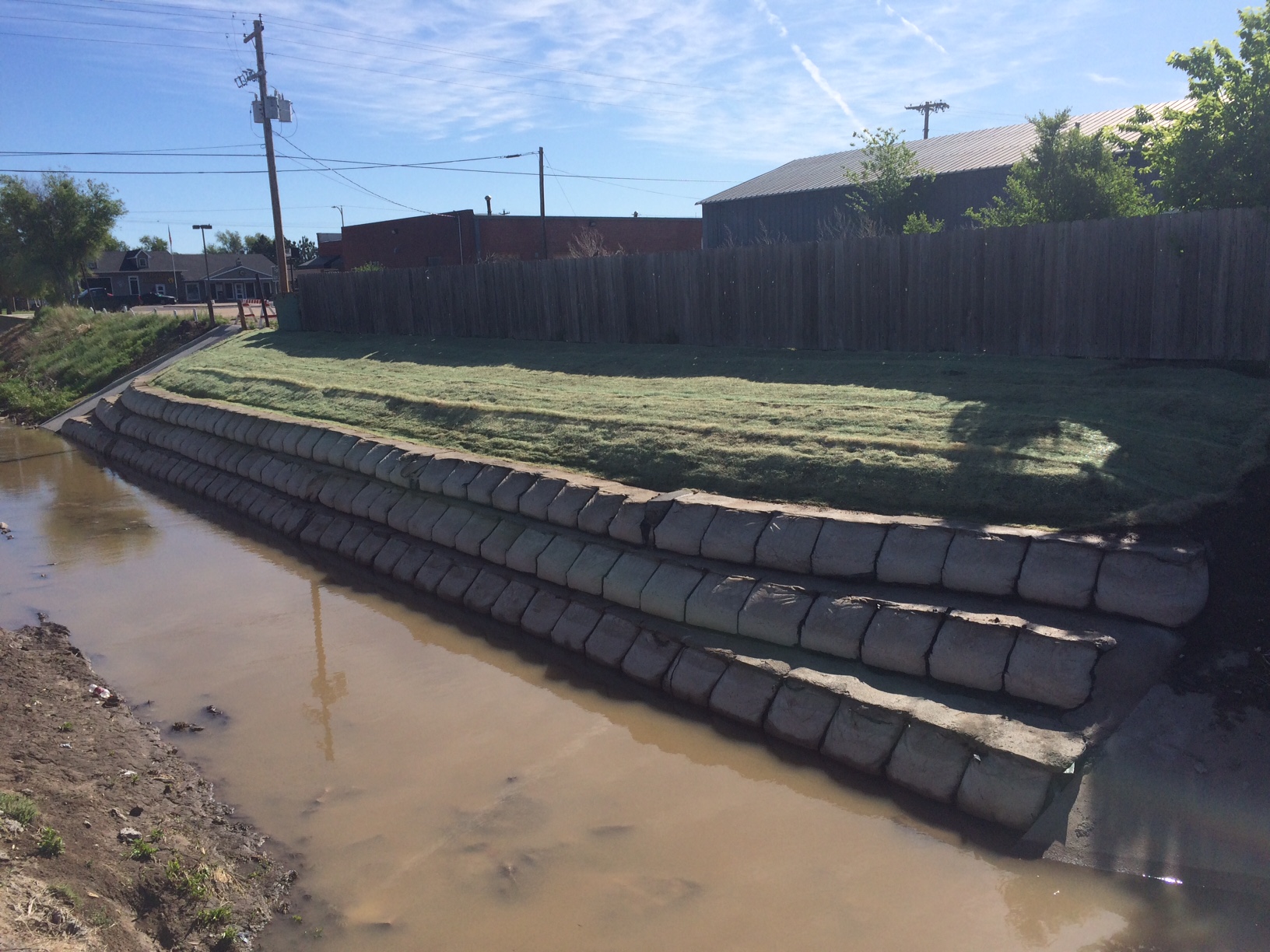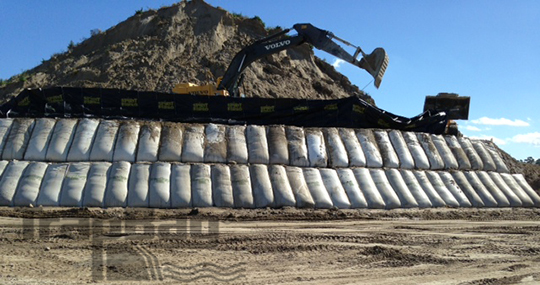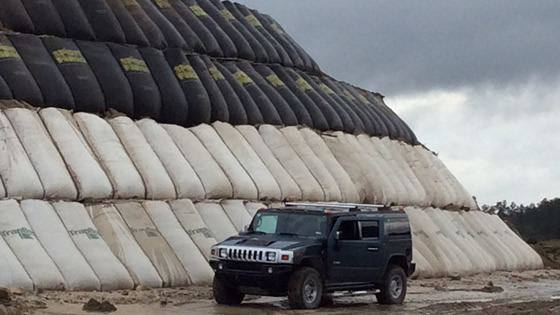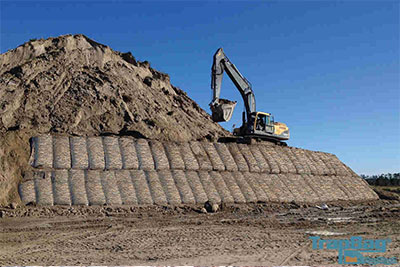Learn more about MSE retaining walls and how to construct them.
What is an MSE Retaining Wall
A mechanically stabilized earth wall (MSE) uses materials alternating layers of backfill and soil reinforcements. The materials chosen depend on the size and purpose of the wall.
Flex MSE Retaining Wall
A flex MSE retaining wall is a cost-effective, safe, permanent, and environmentally friendly way to construct an MSE wall. They don’t require a lot of grading of the landscape, which reduces the initial installation work. The wall materials are flexible and conform to the land easily as well. At 60% of the cost of concrete, it is a more economical choice for building.
Vegetated MSE Retaining Wall
A vegetated retaining wall is an excellent use of space and landscaping while providing for a more natural look to the wall. These walls offer excellent drainage and help maintain a site with low disruption of the natural landscape. A vegetated retaining wall is a graffiti-free and sustainable option with an aesthetically pleasing build. Construction of these walls uses angles between 0 and 82 degrees.
Earth MSE Retaining Wall
Earth walls are built with a facing material and then reinforced with soil to provide a strong structure. These are also excellent for areas where natural growth will remain and disguise building materials.
What Makes a Retaining Wall Cellular
Cellular refers to the structure of the material used in the retaining wall and is a specific style of MSE wall design. Instead of being one large, solid structure, it is a series of compartments or cells which provide support, flexibility, and strength to the wall. The cells are then combined with dirt and backfilled to strengthen them even more.
When are MSE Retaining Walls Used
An MSE wall provides a barrier along roadways and bridge abutments. They give strong protection from wall collapse with a 95% success rate and are ideal for these locations. They also protect areas where erosion occurs frequently or where a more natural look is required to support retaining walls.
Benefits of MSE Retaining Walls
One of the most significant benefits of MSE retaining walls is how easy they are to use. They are easily installed, maintained, and repaired. They don’t require forms the way conventional concrete walls do, and they are structurally sound.
MSE retaining walls are also highly flexible, allowing them to be a sound structure in areas with seismic activity. They contribute to the aesthetics of a location and enable vegetation regrowth for a more natural appearance while still providing a solid barrier.
Design Factors to Consider
As you’re deciding which design to use and how to set up your MSE wall, looking into the soil weight, drainage, and construction is essential. Surrounding structures such as bridges, roads, and buildings will also impact design.
Flex MSE Construction
Flex MSE wall construction is simple and effective. Builders must consider all factors when developing the plan. There should be no changes to construction without determining how those changes will affect the overall strength and structure of the wall.
Step 1: Map Out Location
Determining where to place the wall is the first step in retaining wall design. Deciding what the purpose is and how to utilize the space around the area will help determine where to build the wall. Factors for this include waterways, roads, bridges, buildings, or other pre-existing structures.
Step 2: Determine Depth
The depth of the MSE wall system is dependent on the angle of the wall and location. Knowing the grade of the angle and the materials behind the wall will help determine the depth of the wall itself. It is important to build a foundation below the full depth of the wall and provide support beneath the entire backfill area.
Step 3: Soil Reinforcement
Soil reinforces the MSE retaining wall behind the face and framing. Packing in the soil as solidly as possible before building the wall gives it a more solid foundation and prevents erosion and slippage.
Step 4: Design Systems
Choosing the right wall material for MSE wall construction is crucial, as is proper installation. Even the slightest deviation from the retaining wall design can cause the wall to fail. Utilizing batting to serve as a filter between the backfill and the wall face will help to prevent erosion from washing the backfill soil through the wall itself.
Deadman’s tie-back is another method of supporting the wall. It provides an anchor from the wall to a concrete slab farther back in the fill area. The purpose is to prevent the wall from being moved by strong external forces such as tides, hurricanes, and other severe natural impacts.
Step 5: Backfill
The backfill is important because that is the final step in the MSE wall construction sequence to hold the wall in place. Properly filling the area is essential. The soil must be packed down at intervals rather than all at the end to ensure sufficient packing to prevent slippage and erosion.
The materials and soils used in the backfill need to be strong but consistent so the machine can compress them evenly. Builders must do this with a flat roller, and construction must be careful not to damage the wall in any way.
TrapBag MSE Retaining Walls
TrapBag retaining wall materials are pentagon-shaped bags that connect pieces like an accordion. They have a flat side for facing and fill from the top. These require less soil than other types of sandbags with stronger structures. Made from heavy-duty textile, they stand four feet tall and can be connected to create a wall of any length, which is excellent for MSE retaining wall design.
Get Started
Using TrapBags for your MSE retaining wall design is simple, solid, and easy to use. The materials are erosion-free and environmentally friendly. With a carefully crafted MSE wall design plan, TrapBag materials, and a strong crew, your MSE retaining wall will last many years to come. Browse TrapBags or contact us today to begin your next project.





